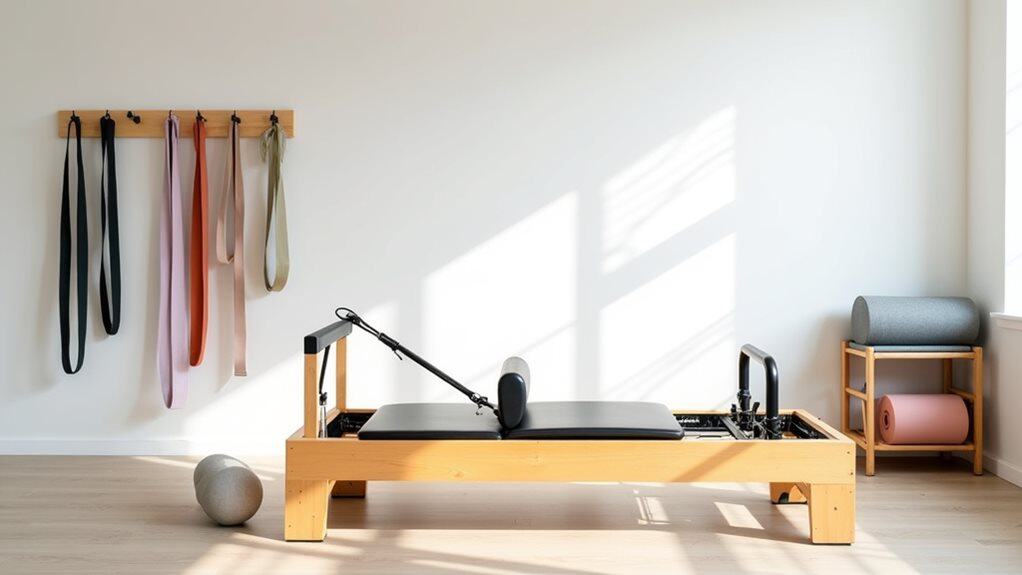Are you looking for a way to take your push-up game to the next level? Resistance bands may be just what you need. These versatile pieces of fitness equipment can provide additional resistance to your push-ups, making them more challenging and effective.
Using resistance bands for push-ups can be a great way to add intensity and variety to your workout routine. By adding resistance to your push-ups, you can engage more muscles and increase the difficulty of the exercise. However, it’s important to use the correct resistance level and proper form to avoid injury.
But are resistance bands for push-ups good? In this article, we’ll explore the benefits and drawbacks of using resistance bands for push-ups, as well as how to incorporate them into your routine for maximum results.
Resistance bands can help you build strength and endurance in your chest, shoulders, arms, and core. By adding resistance to your push-ups, you force your muscles to work harder, which can lead to increased muscle growth and definition. Plus, resistance bands are lightweight, portable, and affordable, making them a convenient option for at-home workouts or when you’re on the go.
However, there are some potential drawbacks to using resistance bands for push-ups, such as the risk of injury if you use them incorrectly or if the band snaps during use. In the following sections, we’ll delve into the specifics of using resistance bands for push-ups and how to incorporate them safely and effectively into your routine.
The Benefits of Resistance Bands for Push-Ups
Getting stronger and improving form are just a couple of the perks that come with incorporating stretchy workout tools into your push-up routine. Using resistance bands for push-ups can help you target specific muscle groups and add an extra challenge to your workout. Resistance bands also come in different types, such as loop bands and tube bands, which offer varying levels of resistance for different fitness levels.
One of the main benefits of using resistance bands for push-ups is that they can help you build strength in your upper body. By adding resistance to your push-ups, you can engage more muscle fibers and increase the intensity of your workout. Resistance bands can also help you improve your form by keeping your elbows in and preventing them from flaring out, which can reduce strain on your shoulders.
In addition to the benefits for push-ups, resistance bands can also be used for other exercises such as squats, lunges, and bicep curls. They’re portable and versatile, making them a great option for at-home workouts or when you’re traveling.
However, it’s important to note that resistance bands may not be suitable for everyone, particularly those with joint or mobility issues. In the next section, we’ll explore some of the potential drawbacks of using resistance bands for push-ups and how to address them.
The Drawbacks of Resistance Bands for Push-Ups
But, it’s important to acknowledge the potential limitations of using resistance bands for push-ups, and it’s understandable if some people may prefer traditional methods. Here are three disadvantages to consider:
-
Limited resistance: Resistance bands may not provide enough resistance for individuals who are already strong or who are looking to increase their strength significantly.
-
Unstable base: The bands can make the push-up movement feel unstable, making it difficult to maintain proper form and potentially increasing the risk of injury.
-
Band placement: Correct band placement on the body can be difficult to achieve, which may decrease the effectiveness of the exercise.
Despite these drawbacks, there are alternatives to using resistance bands for push-ups. For example, you can do push-ups on an unstable surface, such as a stability ball, to challenge your muscles in a different way. You can also try different variations of push-ups, such as incline or decline push-ups, to target different muscle groups.
Remember, incorporating resistance bands into your push-up routine can still be beneficial, but it’s important to be aware of the potential limitations.
In the next section, we’ll discuss how to incorporate resistance bands into your push-up routine to maximize their benefits.
How to Incorporate Resistance Bands into Your Push-Up Routine
Let’s explore how you can take your push-up routine to the next level and feel confident in your ability to challenge your muscles with the help of resistance bands. Resistance band options are plenty, and you can choose the one that suits your fitness level and preference. Beginners can start with lighter bands and gradually move to heavier ones as they progress.
One way to incorporate resistance bands into your push-up routine is by placing the band around your back and looping it around your hands. This way, as you push up, the band will provide extra resistance, making your muscles work harder.
Another option is to place the band around your wrists and keep it taut as you perform your push-ups. This will engage your shoulder and arm muscles more, giving you a deeper burn.
Modifications for beginners include starting with modified push-ups on your knees and using lighter resistance bands. As you get stronger, you can move on to full push-ups and heavier bands. Remember to always listen to your body and adjust accordingly.
With a little creativity and consistency, resistance bands can help you challenge your muscles and take your push-up routine to new heights.
Ready to spice up your push-up routine even more? Other ways to challenge your muscles include incorporating weights, doing plyometric push-ups, and trying different variations like diamond push-ups. Keep exploring and discovering new ways to challenge yourself and keep your fitness journey exciting.
Other Ways to Spice Up Your Push-Up Routine
If you’re looking to spice up your push-up routine, there are a few key points to consider.
First, try variations in hand placement to target different muscles and add variety to your workout.
Next, consider changing up the tempo of your push-ups for a more challenging workout.
Finally, adding weight, whether through a weighted vest or dumbbells, can increase the intensity of your push-up routine and help you build strength.
By incorporating these variations, you can take your push-up routine to the next level and see even better results.
Variations in Hand Placement
You’ll love the different ways you can position your hands while using resistance bands to switch up your push-up routine. Hand placement tips can help you target specific muscle groups and increase muscle activation.
For example, placing your hands wider than shoulder-width apart can engage your chest muscles more, while a closer hand placement can target your triceps. Another option is to alternate between different hand placements during your push-up routine. This can keep your muscles guessing and prevent plateauing.
You can also try using a staggered hand placement, where one hand is positioned higher than the other. This can challenge your core stability and enhance muscle activation in both your chest and triceps.
Now, let’s talk about how tempo changes can take your push-up routine to the next level.
Tempo Changes
To really challenge yourself and take your push-up routine to the next level, try changing up the tempo and varying the speed at which you perform each rep. This type of training, known as tempo training, involves manipulating the tempo or rhythm of your push-up movement to increase muscle activation and strength.
Here are three ways to use tempo training with resistance bands for push-ups:
-
Slow it down: Perform each rep of your push-up routine at a slower pace, taking a full four seconds to lower your body and four seconds to push it back up. This will increase the time your muscles spend under tension, leading to greater muscle activation and strength gains.
-
Speed it up: Alternatively, you can perform your push-ups at a faster tempo, taking only one second to lower your body and one second to push it back up. This will increase the power output of your muscles and improve your explosive strength.
-
Mix it up: Finally, you can alternate between slow and fast tempos, such as taking three seconds to lower your body and one second to push it back up. This will challenge your muscles in different ways and prevent boredom in your routine.
As you become comfortable with these tempo changes, you may want to consider adding weight to your push-up routine.
Adding Weight
Adding weight to your push-up routine can be a great way to challenge your muscles and increase strength gains, so don’t be afraid to incorporate it into your workouts. Weighted push-ups can be done using a weight vest, plates, resistance bands, or even a backpack filled with heavy items.
By gradually increasing the weight used, you can achieve progressive overload which is necessary for muscle growth and strength gains. It’s important to remember that while adding weight can be beneficial, it’s crucial to maintain proper form throughout the exercise.
Make sure your hands are shoulder-width apart, your back is straight, and your core is engaged. As you lower your body towards the ground, keep your elbows tucked in and your head aligned with your spine. With proper form, adding weight to your push-ups can take your workout to the next level and help you achieve your fitness goals.
The importance of proper form in push-ups cannot be overstated. It not only helps to prevent injuries but also ensures that you are targeting the correct muscles and getting the most out of your workout.
In the next section, we’ll explore some tips for maintaining proper form during push-ups.
The Importance of Proper Form in Push-Ups
Maintaining proper form during push-ups is crucial for achieving maximum results and preventing injury. Here are some reasons why proper form is important for push-ups:
-
Proper form ensures that you’re targeting the right muscles. Push-ups are a compound exercise that work your chest, shoulders, and triceps. If you don’t use proper form, you may end up using other muscles to compensate, which can lead to imbalances and injury.
-
Proper form helps to engage your core. When you do a push-up, your core muscles help to stabilize your body. If you don’t use proper form, you may not be engaging your core effectively, which can lead to lower back pain and other issues.
-
Proper form helps to prevent injury. When you do a push-up, you’re putting a lot of stress on your joints and muscles. If you don’t use proper form, you may end up putting too much stress on one area, which can lead to injury over time.
-
Proper form helps to maximize your results. By using proper form, you’re ensuring that you’re getting the most out of each rep. This means that you’ll be able to build strength and muscle more quickly than if you were using improper form.
Remember, proper form is essential for getting the most out of your push-ups. In the next section, we’ll go over some common mistakes to avoid to ensure that you’re using proper form every time you do a push-up.
Common Mistakes to Avoid in Push-Ups
You might be sabotaging your push-up gains by making these common mistakes, so pay attention and avoid them for maximum results.
One of the most common mistakes is sagging your hips or lower back. This puts unnecessary strain on your lower back and decreases the effectiveness of the push-up. To correct this mistake, engage your core muscles and keep your body in a straight line from your head to your heels.
Another common mistake is not lowering your body all the way to the ground. This limits the range of motion and reduces the benefits of the exercise. To correct this mistake, lower your body until your chest touches the ground and then push yourself back up. Make sure to keep your elbows close to your sides and your wrists aligned with your shoulders.
Lastly, many people make the mistake of flaring their elbows out to the sides. This puts more strain on your shoulders and decreases the effectiveness of the push-up. To correct this mistake, keep your elbows close to your sides and your hands directly under your shoulders. This will engage your chest muscles more effectively and give you better results.
By avoiding these common push-up mistakes and correcting your form, you can maximize the benefits of this exercise and achieve your fitness goals.
In the next section, we’ll discuss how resistance bands can benefit your overall fitness routine and take your workouts to the next level.
How Resistance Bands Can Benefit Your Overall Fitness Routine
Now that you know the common mistakes to avoid in push-ups, it’s time to explore how resistance bands can elevate your overall fitness routine.
Resistance bands are versatile workout equipment that can help you improve your strength, flexibility, and range of motion. These bands come in different levels of resistance, making them ideal for beginners and advanced fitness enthusiasts alike.
One of the benefits of using resistance bands is that they can strengthen your muscles in ways that traditional weights cannot. Resistance band exercises target specific muscles and engage your core, resulting in a more balanced and functional body. Furthermore, resistance bands are portable and lightweight, making them perfect for home workouts or when you’re on-the-go.
Resistance bands offer benefits beyond push-ups. You can use them for various exercises, such as bicep curls, squats, and shoulder presses. Resistance bands also offer a low-impact workout that reduces the risk of injury. Whether you’re recovering from an injury or looking to switch up your routine, resistance band exercises can help you achieve your fitness goals.
With all of the benefits that resistance bands offer, it’s no wonder they have become a popular workout tool.
In the next section, we’ll delve deeper into the question of whether resistance bands are good for push-ups. But before we do that, let’s take a moment to appreciate all the ways resistance bands can benefit your overall fitness routine.
Are Resistance Bands for Push-Ups Good?
Let’s take a moment to explore whether incorporating resistance bands into your push-up routine can enhance your game.
If you’re looking for a way to increase the intensity of your push-ups, resistance bands are a great alternative to traditional weights. They offer a unique type of resistance that can help you build strength and muscle endurance.
When it comes to the effectiveness of resistance bands for push-ups, it’s important to compare them to other options. While weights can be effective for building strength, resistance bands offer a more versatile workout that allows for more range of motion and flexibility.
Additionally, resistance bands are more affordable and portable than traditional weights, making them a great option for those who want to work out at home or on-the-go.
Overall, incorporating resistance bands into your push-up routine can be a great way to take your workouts to the next level. By using resistance bands, you can add intensity and variation to your routine, build strength and muscle endurance, and do so at an affordable price point.
So why not give it a try and see the results for yourself?
Final Thought
So, are resistance bands for push-ups good? The answer is a resounding yes!
Incorporating resistance bands into your push-up routine can provide a multitude of benefits, such as increased strength, improved muscle activation, and added variety to your workout. However, it’s important to note that resistance bands are not a magic solution for perfect push-ups.
Proper form and technique are still essential for maximizing the benefits of your workout. With a little bit of practice and patience, incorporating resistance bands into your push-up routine can help take your fitness to the next level. So, don’t be afraid to give them a try and see the results for yourself.
Remember, the sky’s the limit when it comes to achieving your fitness goals.




